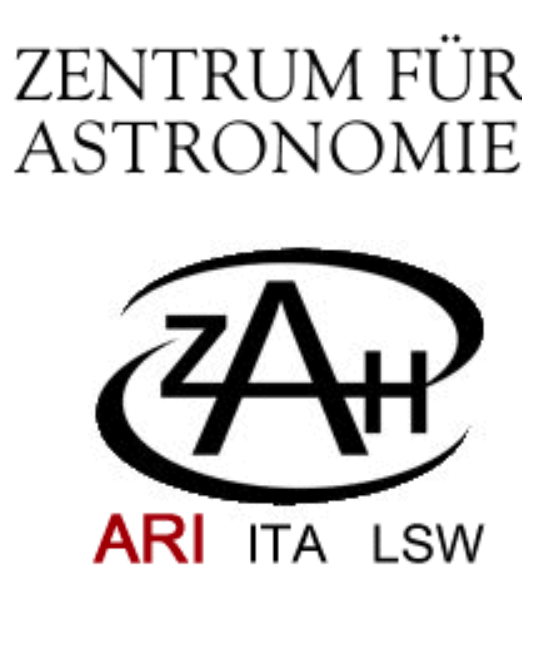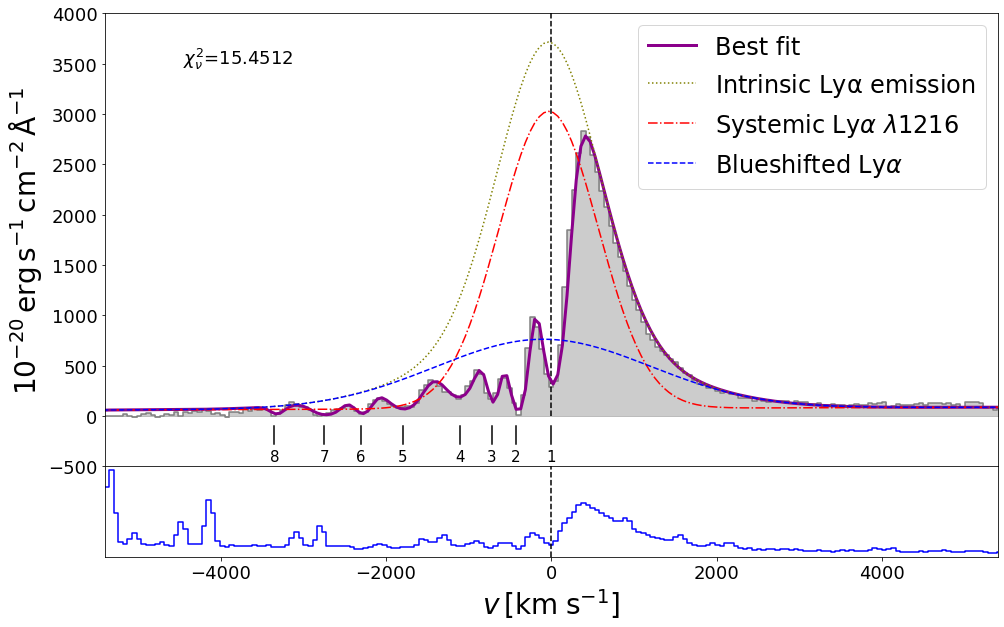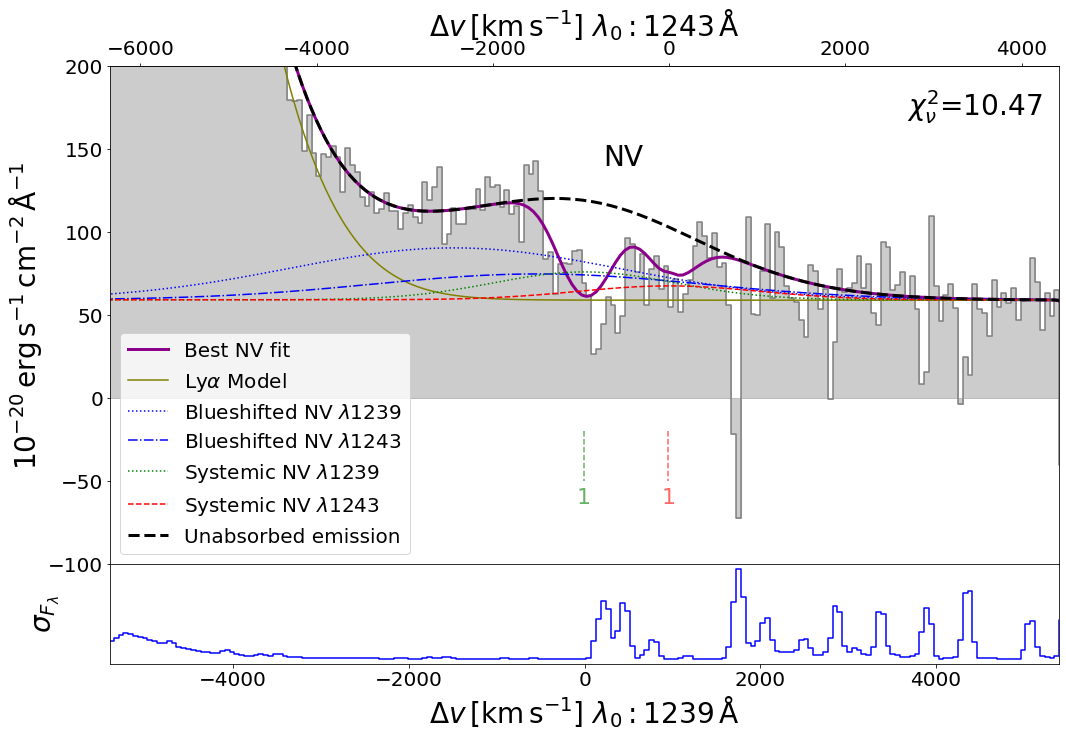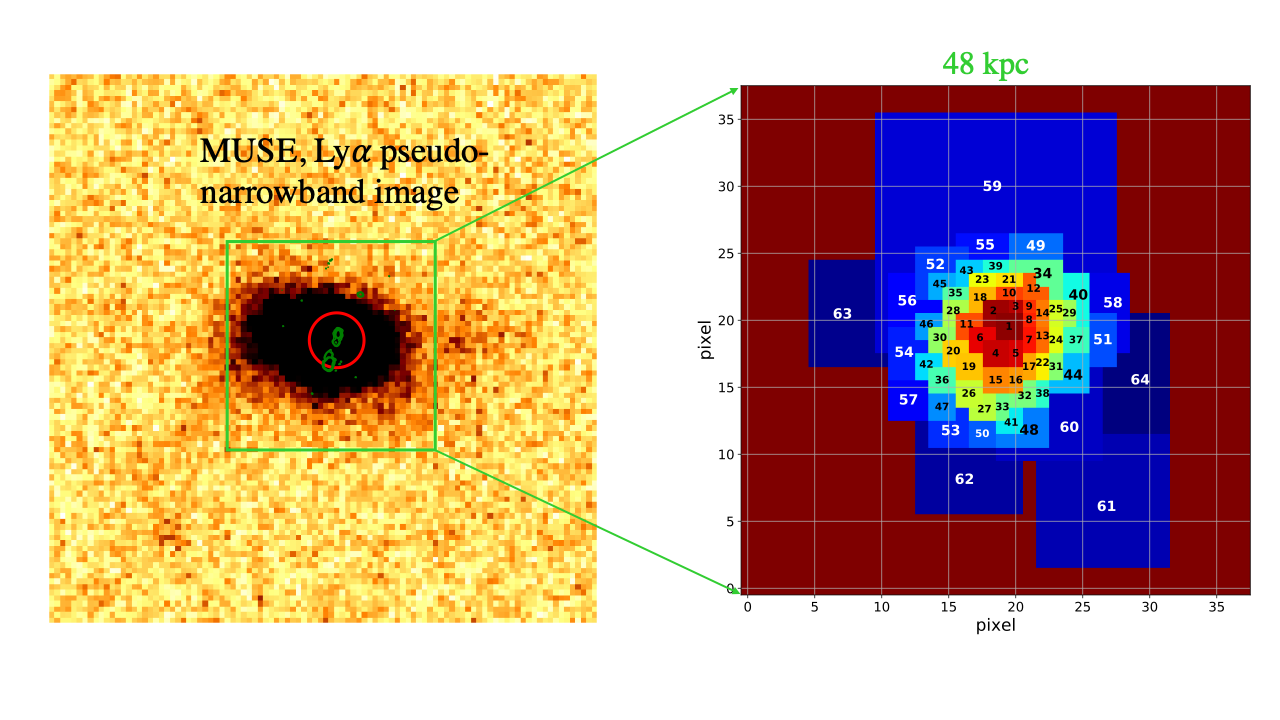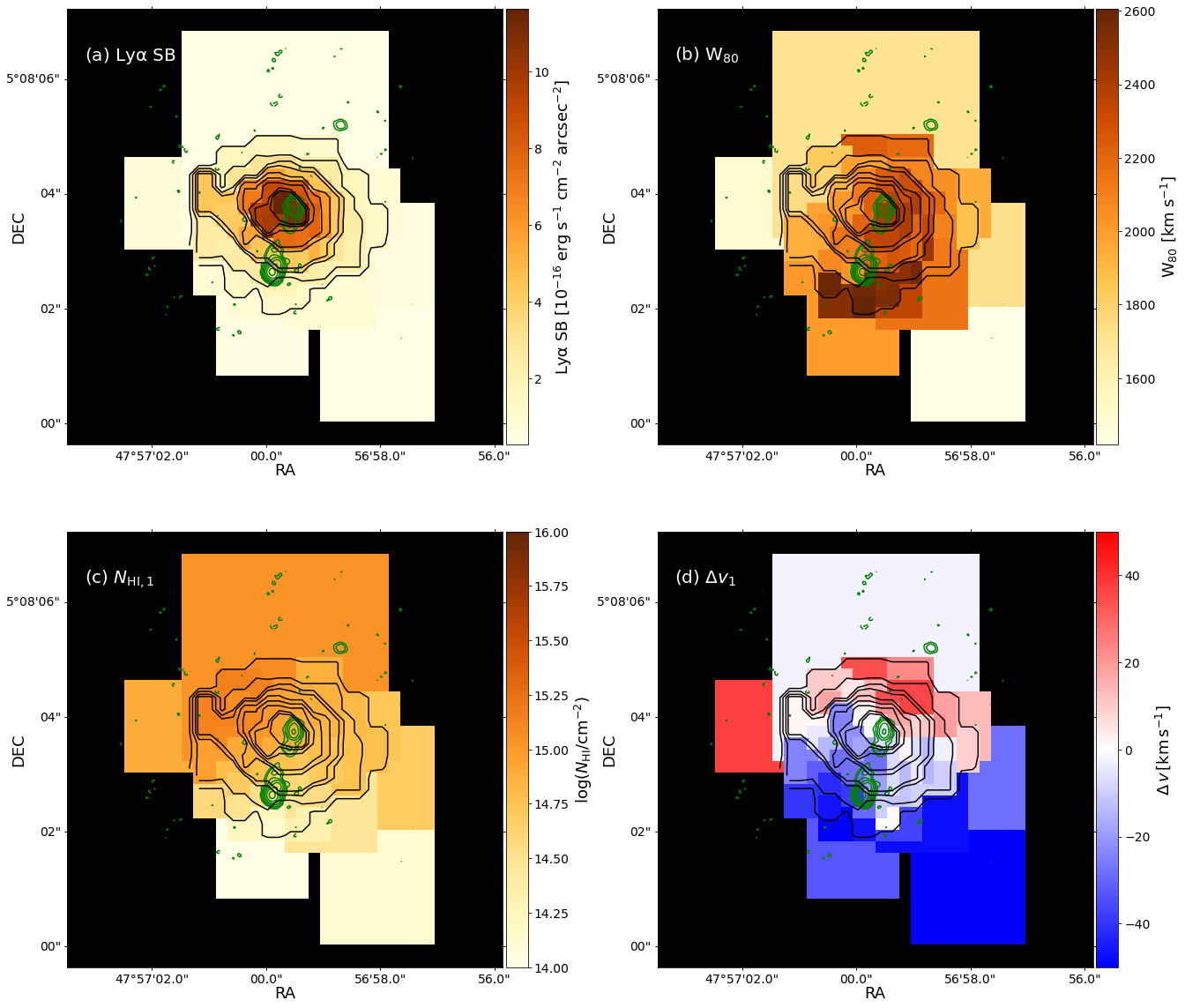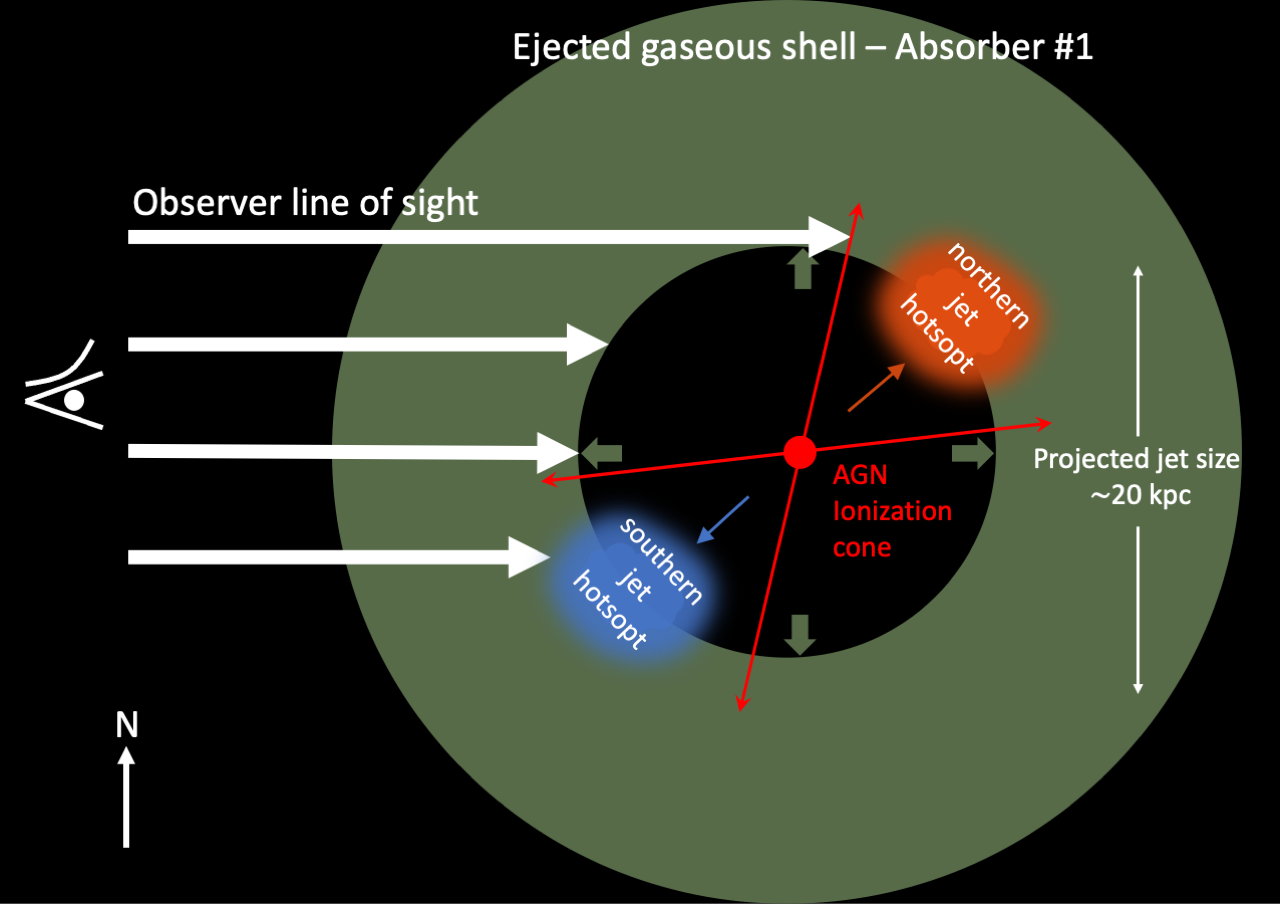- Feedback from active galaxies is essential part in the formation and evolution of their hosts through which the galaxy exchanges energy and material with the environment.
- The epoch at z~2--3 (Cosmic Noon) which marks the peak of both star formation and quasar activity is a key period to study the feedback processes.
- HzRGs are the only kind of object where one can study the quasar-mode feedback, radio-mode feedback and host galaxies simultaneously.
- HzRGs have extended gaseous halos (many with >100 kpc) around , well into the circumgalactic medium (CGM). The halos are often metal enriched with deep extended absorbers.
- We have a sample of eight HzRGs with MUSE observations (~4h each). In this work, we perform a pilot study to map the absorption gas around one HzRG, 4C04.11 at z ~4.5.
This poster is based on Wang et al. (submitted).
